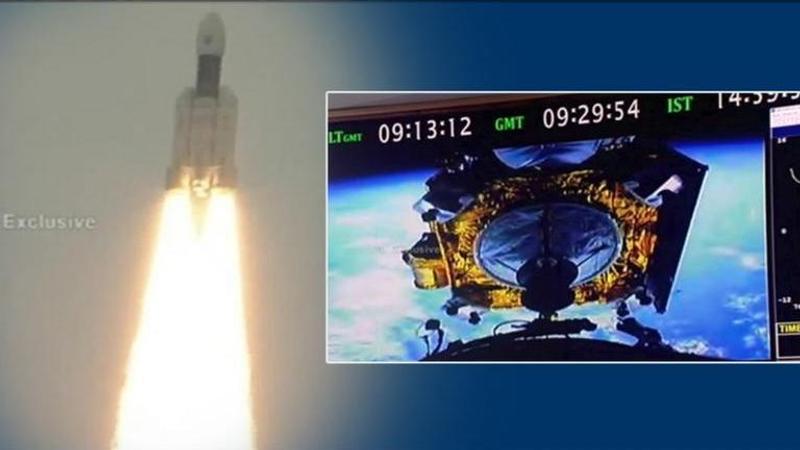Published 15:25 IST, July 22nd 2019
Chandrayaan-2 Launch: ISRO's Bahubali rocket successfully inserts Lunar mission probe into Earth Orbit, here's what will happen next
After ISRO announcing Chandrayaan-2's 'Bahubali' rocket successful injection into the Earth Orbit on Monday, here's what will happen from its lift-off to 'Vikram' Lander's soft landing on the lunar surface on September 9.

After ISRO announcing Chandrayaan-2's 'Bahubali' rocket successful injection into the Earth Orbit on Monday, here's what will happen from its lift-off to 'Vikram' Lander's soft landing on the lunar surface on September 9.
Here's the trajectory of events:
- The moment of lift-off:
- Then was the successful separation of the L-10 and S200 rockets from the main rocket, with which 'Bahubali' had successfully reached the desired altitude and velocity:
- Immediately later, the 640-tonne and 43-meter tall GSLV MK-III rocket- 'Bahubali' was successfully injected into the Earth Orbit:
Earth to Moon's orbit:
- After the initial thrust and separation of the first stage, the second stage has the core booster will power the rocket. This will help the rocket to continue orbiting the Earth till it enters the Moon's gravitational field. Once the rocket enters the lunar orbit, the lunar orbiter with eight payloads weighing 2310 kg including 1705 kg of propellant, will orbit the moon with a lunar orbit of 100 km.
Here's is the rocket projected path to the moon:
(Photo: ISRO)
'Vikram' lander's soft landing and Pragyaan rover's exploration:
- Then the lander 'Vikram' named after India's space pioneer Vikram Sarabhai weighing 940 kg including 500 kg propellent with four payloads, will land on the moon after separating from the orbiter when it is near the lunar surface, descending slowly up to 30km for a soft landing approximately on September 9, according to ISRO.
- Soon after that, the six-wheeled rover 'Pragyan' with two payloads weighing 25 kg having a 450W solar battery panel will ravel upto 500m before it loses power.
Chandrayaan-2's rocket lifted off at the scheduled time of 2:43 PM on July 22. The average distance between the Earth and the Moon is 3, 84, 000 km. Vikram lander will land on Moon on the 48th day of the mission starting from Monday. This moon-lander and rover mission proves that India is taking lead in space exploration as its mission aims to investigate the unexplored south pole of the moon. With Chandrayaan-2 India aims at the soft landing on the Moon. If successful, it will be the fourth country after the US, Russia, and China to do so.
Updated 15:41 IST, July 22nd 2019





